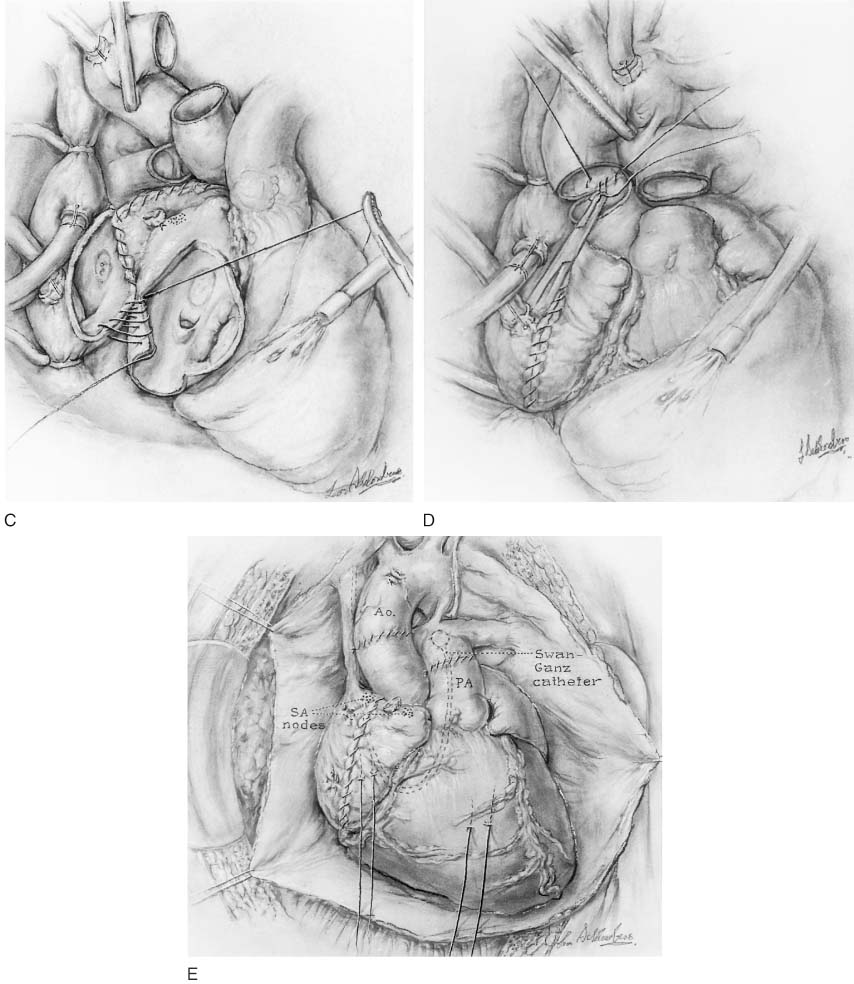 |
 |
Figure 56-5
A, Preparation for aortic
and bicaval cannulation. Recipient cardiectomy follows initiation of cardiopulmonary
bypass. Ao, aorta; IVC, inferior vena cava; LV, left ventricle; PA, pulmonary artery;
RA, right atrium; RV, right ventricle; S-A, sinoatrial; SVC, superior vena cava.
B, Recipient cardiectomy is complete, with maximum
lengths of ascending aorta and main pulmonary artery left. Much of the recipient's
atria remain because they have been divided near the atrioventricular groove. Implantation
begins with the left atrial anastomosis. C, Right
atrial anastomosis.
D, Frequently, the pulmonary artery is next to be
anastomosed. However, as shown here, the aortic anastomosis may precede anastomosis
of the pulmonary artery to shorten the ischemic time of the graft. E,
The anastomoses have been completed and the patient has been separated from cardiopulmonary
bypass.(From Shumway SJ, Shumway NE:
Operative techniques in lung transplants. In Thoracic
Transplantation. Oxford, Blackwell Scientific, 1995, pp 164–167.)

 |
